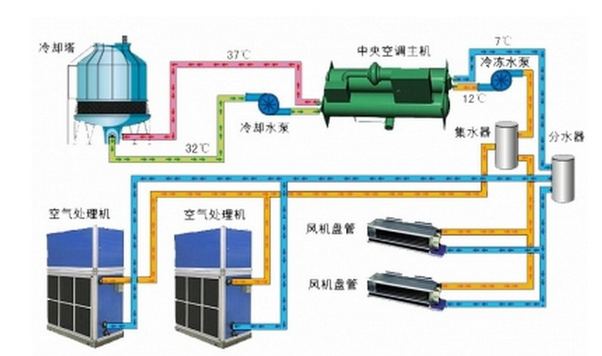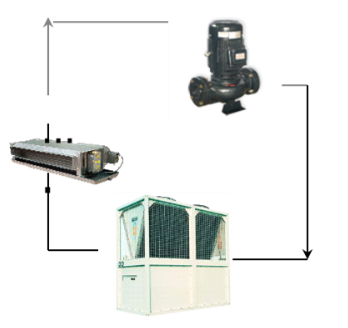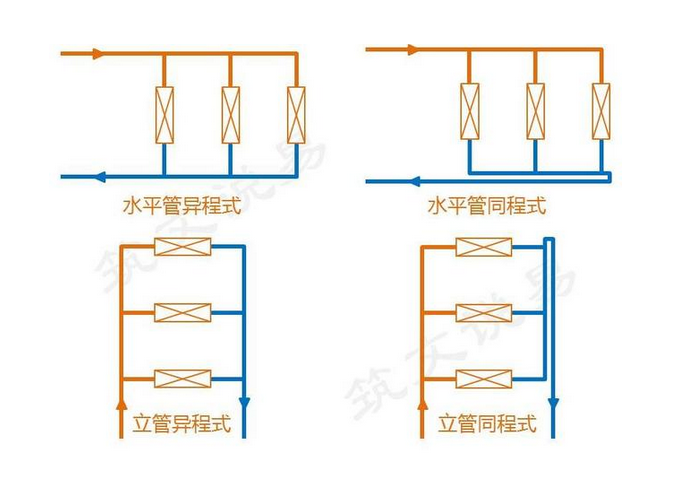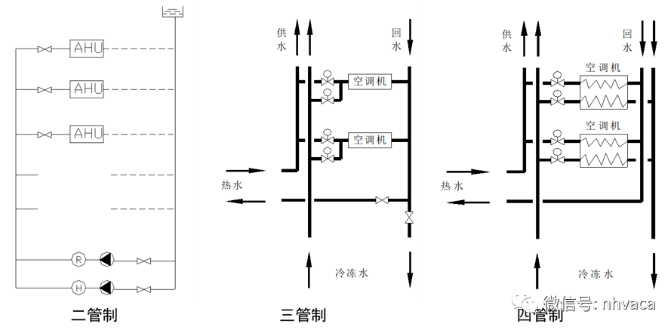
1. Open system
The water system is in direct communication with the large gas. Commonly used in cooling water systems, the system is relatively simple. When the water pool capacity is large, the water temperature is more constant, and it has a certain cooling storage capacity in summer. High oxygen content in the water, more opportunities for corrosion of piping and equipment. Additional energy to overcome hydrostatic pressure needs to be added, and pump power will increase. Hydraulic balance is relatively difficult.

2. Closed systems
Water piping system is not directly connected to the atmosphere; pump selection relative to the open type is relatively small (static pressure) pump head, power are relatively small. Piping and equipment corrosion chances are less; the system is relatively simple design; to have an expansion tank (pressure effect), the height should be higher than the highest point of the water system more than 1.5m; to have a bleeder valve and other valves

3. Same-programme water system and different-programme water system
(1) the same programme water system: supply and return water through each loop of equal length of the pipeline; mainly to ensure that the resistance of the piping system is roughly the same, the distribution of water flow uniformity; need to set up the return pipe, the length of the pipeline is long, the initial investment is slightly higher.
(2) heterogeneous water system: supply and return water through each loop of the pipeline length is not equal does not need to return pipe, pipeline short, simple pipeline, low investment; may lead to uneven distribution of water and liquid volume phenomenon; can be installed in the branch pipe flow regulator; it is recommended that the installation of balancing valves.

4. Plumbing method
(1) two-control water system: heat, cooling combined with the same piping system. Suitable for winter, summer cooling, heat load is clear, the transition season is very short or the transition season does not require air-conditioned buildings. Cooling in summer, heating in winter, the transition season can use natural cooling sources (such as fresh air) cooling building. The piping system is simple and the initial investment is provincial; it cannot meet the requirements of cooling and heating at the same time.
(2) Three-control water system: cold and hot water supply pipes are connected to the end equipment at the same time (the coil is still cold and hot), each end equipment can be independently supplied with cold or heat, cold supply, heat return piping shared. Can meet the requirements of cooling and heating at the same time, the pipeline is relatively simple. In both cooling and heating end equipment running at the same time, the water temperature of the return pipe is a mixture of chilled water and hot water return temperature, this water temperature will be higher than the normal requirements of the chiller return temperature is lower than the normal operation of the heat exchanger return temperature. There is a heat and cold loss, equipment energy consumption will be much larger than when the two are running independently.
(3) four-control water system: separately set up for cold, heat supply piping, but for cold, heat return piping common. The end must have cold and heat coils at the same time; it can flexibly realise simultaneous cold and heat supply, and there is no cold and heat loss; the piping system is complicated, the initial investment is high, and it occupies much space in the building; it is generally used in special high-standard buildings (e.g.: five-star hotels).

5. Fixed water flow
Fixed water flow: In the fixed water system, there is no automatic water control measures. Generally used to adjust the end of the air volume or electric three-way valve to implement temperature self-control regulation; through automatic control of the three-way valve opening, adjust the bypass branch and DC branch of the water flow, thereby controlling the amount of water through the end of the equipment. The system is simple, easy to operate, without the need for complex self-control equipment. The total capacity of the chiller unit and the total flow of the pump must be calculated according to the maximum value of the end cooling capacity and cannot be decided according to the maximum value of the end cooling capacity hour by hour, otherwise it will be insufficient due to the lack of flow and result in the insufficiency of part of the end cooling capacity.
6.Variable water flow
Variable water flow: by changing the water flow to adapt to the room load change requirements (for the load side). The energy consumption of the water pump is changed with the load increase or decrease. Input energy consumption decreases with the load. Generally use two-way valve + supply and return mains differential pressure adjustment valve.